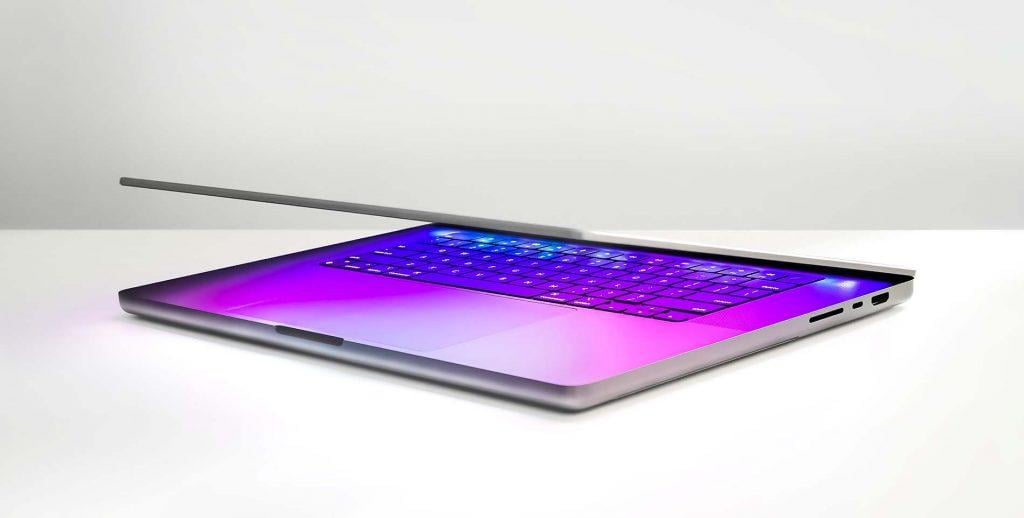Intel Mac vs. Apple Silicon: Which MacBook in 2024?
Introduction
The question that once divided the MacBook world – Intel or Apple Silicon? – now has a clear answer. Since Apple launched its own processor revolution with the M1 chip in late 2020, the landscape has changed dramatically. We've now reached the M4 generation, and the advantages of Apple's own chips are overwhelming.
But does this mean the final end for Intel-based MacBooks? Not quite. For certain use cases and budgets, the older models still have their place. We're bringing the comparison up to date and helping you make the right decision for your needs and wallet.

The New Era: Why Apple Silicon Dominates
The switch from Intel to the "M-series" wasn't just a simple upgrade, but a fundamental change in architecture. Instead of using separate components for processor (CPU), graphics (GPU), and memory (RAM), Apple integrates everything on a single "System on a Chip" (SoC). The result is unprecedented efficiency.
Advantages of Apple Silicon MacBooks (M1, M2, M3, M4):
- Phenomenal performance: Even the base M1 model outperforms many previous Intel i7 or i9 chips in everyday tasks and professional applications.
- Revolutionary battery life: Models like the MacBook Air achieve up to 18 hours of video playback – a value Intel MacBooks could only dream of.
- Efficient cooling: Most M-series MacBooks stay cool and quiet during normal tasks. The MacBook Air even comes completely without a fan.
- Seamless ecosystem: The ability to run iPhone and iPad apps directly on the Mac opens up new possibilities.
- Future-proofing: All new macOS versions and software developments are primarily optimized for the M architecture.
The Niche: Where Intel MacBooks Still Score Points
Despite the clear superiority of M chips, there are few but important scenarios where an Intel MacBook might still be worth considering:
- Native Windows via Boot Camp: This is the most important and almost only remaining technical advantage. If you absolutely need to run Windows at full performance (e.g., for certain games or developer tools) directly on the hardware, there's no way around an Intel model. On M Macs, Windows is only possible through virtualization software like Parallels, which works well but isn't the same as a native installation.
- Support for older software: Do you have very old 32-bit programs or special hardware whose drivers were never updated for modern macOS versions? An older Intel MacBook with an older operating system could be your last resort.
- Extremely low budget: As used devices, Intel MacBooks are now significantly cheaper than their M-chip counterparts.
Direct Comparison: Performance, Compatibility, and Repair
| Area | Intel MacBook (ca. 2018-2020) | Apple Silicon MacBook (M1/M2/M3/M4) |
|---|---|---|
| CPU/GPU Performance | Good for its time, but outdated today. | Excellent, leading in performance per watt. |
| Battery Life | Mediocre (approx. 5-10 hours in use) | Outstanding (approx. 15-20 hours in use) |
| Heat & Noise | Can heat up quickly, fan often audible. | Stays mostly cool and silent/very quiet. |
| Software Compatibility | Everything runs well up to macOS Monterey/Ventura. Future support is limited. | Excellent. Almost all Intel apps run seamlessly via "Rosetta 2" translation. Native apps are lightning fast. |
| Repair & Upgrades | SSD upgrades were still possible on some models. Replacement parts are established. | No upgrades possible. RAM and SSD are permanently soldered to the chip. Repairs are more complex and often more expensive. |
| Data Recovery | Established processes, as the SSD was often a separate component. | Significantly more complex and often only possible through specialized experts, as the SSD is part of the mainboard. |
Buying Recommendation 2024: Who Should Buy What?
An Apple Silicon MacBook (M1, M2, M3, or M4) is the right choice for 99% of users.
- Everyday users, students, writers (M1/M2 MacBook Air): Performance is more than sufficient, battery life is gigantic, and the devices are light and durable. A used M1 MacBook Air is often the best deal in terms of price-performance.
- Creative professionals, developers, power users (M2/M3/M4 Pro/Max): For video editing, 3D rendering, or complex programming tasks, the Pro and Max chips offer performance that can compete with desktop workstations.
- Anyone who wants future-proofing: The M architecture is the present and future of Apple. You'll receive software updates for years and the best resale value.
An Intel MacBook is only an option in these exceptional cases:
- Windows power users: You rely on Boot Camp for gaming or special x86 software.
- Users of "legacy" software: You use an old, critical program that no longer runs on new Macs.
- Extremely tight budget: You find a very cheap, well-maintained used device (avoid models from 2019 because of the butterfly keyboard!) and your requirements are modest.
Conclusion: The Future is Clear, but the Past Hasn't Finished Yet
For the overwhelming majority of users, there's no way around a MacBook with Apple Silicon. The advantages in performance, battery life, and efficiency are so massive that they outweigh the disadvantages in repairability. Choosing a new or used M1, M2, M3, or M4 MacBook is by far the smartest and most future-proof investment.
Intel MacBooks have become relics of a bygone era. They only serve a small niche where native Windows is indispensable, or serve as an ultra-cheap entry into the Apple world.
No Matter Which System You Use – We're Your Partner for Repairs!
Whether your trusty Intel MacBook needs a new display, the battery is failing, or you need complex data recovery from a newer M-series MacBook – SADAGHIAN in Hamburg is your experienced contact for both architectures. We'll advise you honestly about repair options and carry them out professionally.